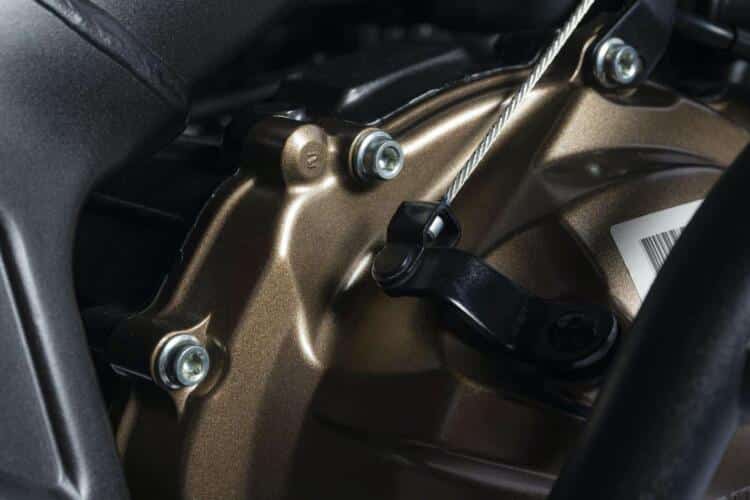If you find that your motorcycle clutch is so hard to pull that your hand starts to hurt after 20 or 30 pulls, the fix may be a lot more simple than you think. I’ve ridden older motorcycles with pretty stiff clutch levers and I’ve wondered if there was something I could do to make it easier. Let us glance through motorcycle clutch lever systems and how to maintain them.
There are several factors that can contribute to a stiff clutch. An old, worn or dirty clutch cable is one reason. Other factors include dirty lever, stiff clutch springs, dirty or worn actuator arm or pushrod. Clutch position and hand strength can also be a factor. Riders need to maintain clutch levers and motorcycle brake to ride effortlessly. To keep the motorcycles running from Mon Fri, riders have to look into different clutch lever components like clutch cable, cable routing and other adjustments. Since the clutch levers highly impact a motorcycle brake, damaged or unused items should be replaced. An unused item inside the clutch levers can affect the overall motorcycle performance. Sell an unused item to get a better clutch lever system for the motorcycle.
In this article, I’ll cover all the reasons why your clutch could be stiff, including ways to rectify the problem, starting from the simplest solution to the more complicated repair.
Clutch Cable
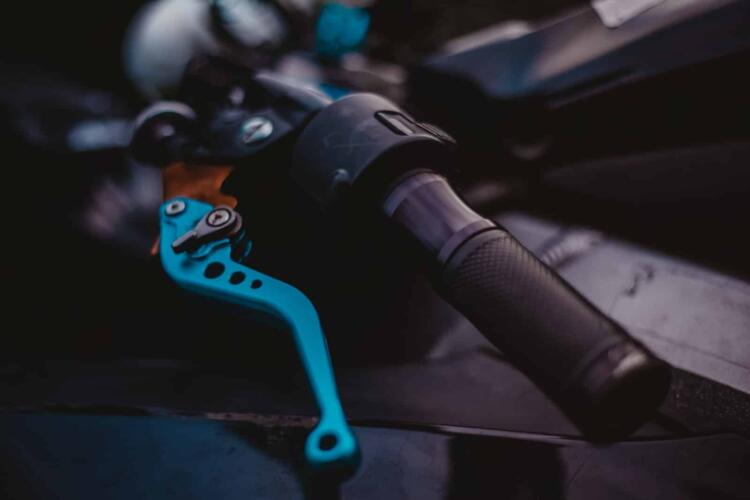
The first place to look is your clutch cable. Over time, old lube can dry up inside the casing preventing the cable from sliding freely. Part of your annual maintenance should include inspection and lubrication of the clutch cable.
- Start by inspecting the clutch at the point where it connects to the clutch lever and to the actuator arm. If the cable is frayed, even by one strand, you must replace it. Also check for cracks or worn spots on the housing.
- To lubricate the cable properly, it should be removed from the motorcycle. Follow the repair instructions for your make and model motorcycle.
- Once removed, you will need to squirt clutch lube down the cable until it drips out the other end. You can use any type of lube, but avoid solvents like WD-40 or degreasers. Another method is to use a cable luber, attached to the end of the cable, then apply the lube. This is a faster and much cleaner method. You can get a simple cable luber on Amazon here.
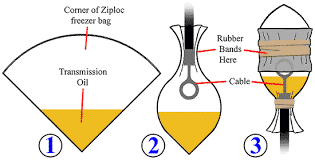
A second method for lubricating the cable is the plastic bag method. Take a common, plastic freezer bag and squirt a little bit of lubricant in it so it pools in one corner of the bag. Place one end of the cable into the bag and wrap a rubber band around it so the fluid won’t leak out. Next, turn it upside down and allow the fluid to drain down the clutch cable until it drips out the other end. Quick, simple and clean as long as you get that rubberband tight enough.
Cable Routing
When inspecting your clutch cable, or when re-installing a new one, make sure the cable is routed properly to avoid pinching or crimping. The cable should make wide bends around the handlebars and then straight down the side of the tank. If the bend is too sharp, this will prevent the cable inside the casing from siding feeling, resulting in a stiff clutch.
Clutch Levers
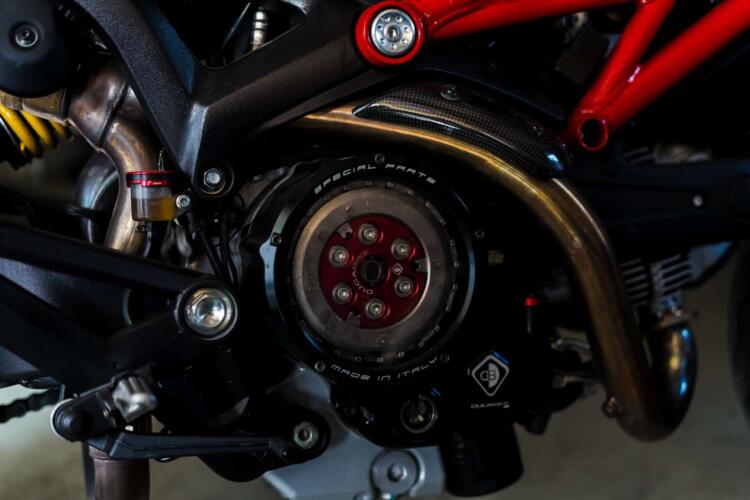
The next thing to inspect is the clutch lever. Stiffness in the lever can sometimes be caused by sticky grease and dirt at the pivot point, as well as worn bearings. Remove the clutch levers to clean and inspect all the contact points include the screw. If your lever has a bearing, check to make sure it spins smoothly. If it’s stiff or seized, it’s time for new levers.
But, if everything is in good condition, simply clean away the dirt and old grease, apply a thin coating of fresh grease and reinstall the lever. Clutch Cable Lubricate Clutch cable – replace if worn or old
Clutch Lever Adjustments
Difficulty squeezing clutch levers can sometimes be caused by their position in relation to your grip. For instance, if your lever is positioned too low, you are forced to bend your wrist down slightly, to grab the clutch. This weakens your grip, making the clutch feel stiff.
- Position your clutch lever so that your wrist is in a flat, neutral position when you reach for the lever. This will give you the most grip strength and reduce hand fatigue.
- Another option is to move the lever an inch or two closer to the center of your handle bars. This will cause you to pull the lever farther away from the pivot point. And, if you recall from your high school physics class, this will make pulling the clutch easier.
- Consider replacing the clutch lever with an adjustable one. Decreasing the reach will make it easier to pull the lever, therefore reducing fatigue.
Install Hydraulic Clutch or EZ-Pull
There are a few aftermarket parts that you can install to make your clutch easier to pull. The less expensive option is the EZ-Pull system. It attaches to your existing clutch lever and cable and uses leverage to assist in pulling the cable. They are easy to install and can be adjusted at different assist levels to fit your needs.
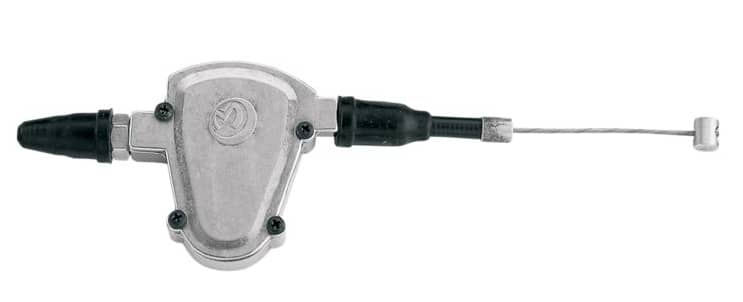
Another option, and one that is a bit more expensive, is to install a hydraulic clutch conversion kit. A lot of the larger, fancier touring bikes already come with hydraulic clutches to make the ride easier. But, if your motorcycle doesn’t have one, you can install one.
Hydraulic clutches use fluid to assist in moving the clutch actuator instead of your grip force alone.
The biggest benefit of hydraulics is that your clutch will be easier to pull. You also don’t need to fiddle with cable adjustments since there is no cable to stretch. The clutch lever will adjust itself when it’s used.
Some riders complain that you can’t feel the clutch friction zone as well, but it’s something you get used to over time. Another downfall; they are more expensive to purchase and to repair if a seal fails.
Conversion kits come specifically to the motorcycle make and model and are one of the more popular brands in the Maguro Hymec conversion kit. They continue to add kits for more motorcycles, the most popular type being dirt bikes, adventure bikes and smaller touring motorcycles.
Clutch Actuator Arm and Push Rod
In most cases maintaining or replacing the clutch cable and levers will be enough to reduce stiffness, but, sometimes the problem can be at the other end of the cable. So, your next step is to inspect the clutch actuator arm and pushrod.
The purpose of the clutch arm and pushrod is to transfer the movement of your clutch cable to the clutch pressure plates, taking the pressure off the plates, which disengages the clutch plates and allows you to shift gears.
Over time, the clutch arm and rod can start to wear out, or in an extreme case, the rod can bend, causing the clutch to feel stiffer and less responsive. Inspect the clutch arm and rod, clean it, and replace it if you find any excessive wear or broken seals.
Check the service manual for your make and model of motorcycle to see how to access the clutch actuator arm and pushrod. Sometimes you can inspect the actuator without having to disassemble anything more than the clutch cable bracket. But sometimes, it will involve draining the motorcycle rider of its oil and removing a cover.
Stiff Clutch Springs
The clutch assembly consists of 4, 5, or 6 springs, depending on your motorcycle. When you pull the clutch you are compressing these springs. One way to help with a stiff clutch is to install springs that are slightly looser and take less effort to compress. Sometimes switching back to OEM springs will help. This is something you have to experiment with until you find a tension that works for you but still allows the motorcycle to shift properly.
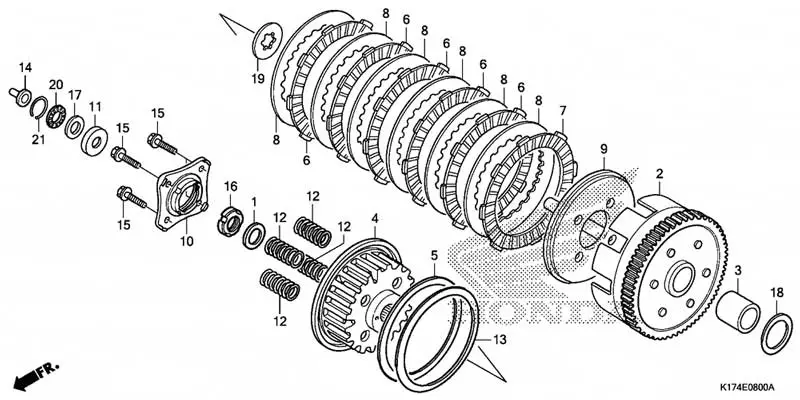
Note: to access your clutch springs and the clutch assembly, you will have to drain the motorcycle of its oil and remove the clutch cover. You should also replace the gasket on reassembly, after removing the cover.
Another trick is to add washers to the spring bolt, which will reduce the spring tension. Start by adding thin washers 1mm thick, or less, then test the clutch pull. You can safely add up to 2mm thickness, but, you must test it to make sure the bike is shifting properly under load, at high acceleration. If the washers or spacers are too thick, your motorcycle will miss a shift, which will destroy your clutch plates over time.
So, just to be clear, if you do any modifications to the clutch springs, always test the gears under load to make sure it is shifting smoothly.
Damaged Clutch Plates
A less likely reason for a stiff clutch, but still one that should not be overlooked if you’ve tried everything else, is damage to the clutch plates and clutch basket. Grooves in the plate surface or notches on the sides of the clutch basket can cause friction when pulling the clutch lever. It can also cause slippage when shifting. These are usually signs of a bigger problem and shouldn’t be ignored. If you have an unused item you can sell Mon Fri with guaranteed holiday delivery services in exchange for clutch levers.
Improve Your Grip Strength
The last thing I want to mention is your grip strength. If you’ve done everything to improve the ease of your clutch and you’re still having a hard time, maybe it’s time to increase your hand strength.
- Pick up a Grip Master and start squeezing.
- Grab a tennis ball or racquetball and squeeze it.
- Add dumbbell wrist curls to your workout.
Related Questions
Are short levers easier to pull than long, stock levers? Actually, no. Longer levers give you more leverage to make the pull feel easier as long as you are gripping it closer to the end of the lever. Short levers, are designed to be pulled using only two fingers so that you can maintain your grip while using the clutch. They are popular on dirt bikes and adventure bikes. But, they don’t necessarily make the clutch easier to pull. Get them on exclusive offers on shopping portals for guaranteed holiday delivery.
Does my posture affect the clutch pull? Sometimes it can. If your handlebars are too far forward, too high, this can cause your wrist to bend in a way that makes it difficult to pull the clutch. Be sure to adjust your clutch lever to match a natural seating position on your style of motorcycle.
A bike shop has exclusive levers and different categories of accessories for optimal motorcycle performance. Customers can shop from brands for vehicle accessories at the best price. They can subscribe with brands to get the best deals on future model releases. There are different categories and components for levers offered by different brands. A bike shop offers the best price to ship, shop, gift and assembles different types of levers for all types of bike model. Brands for bike levers offer exchange and discount offers on their virtual shop.
Fun Fact: You can actually perform a clutchless shift. Read by clicking the link!

